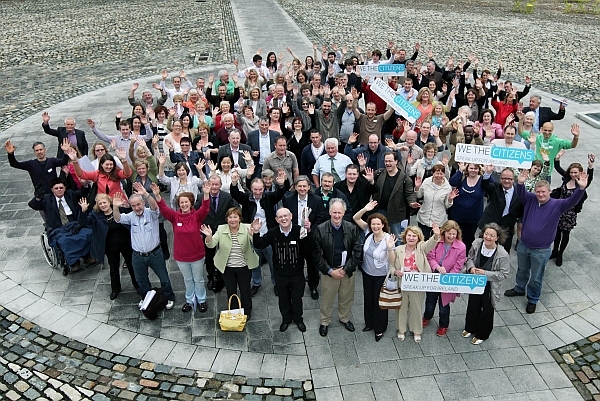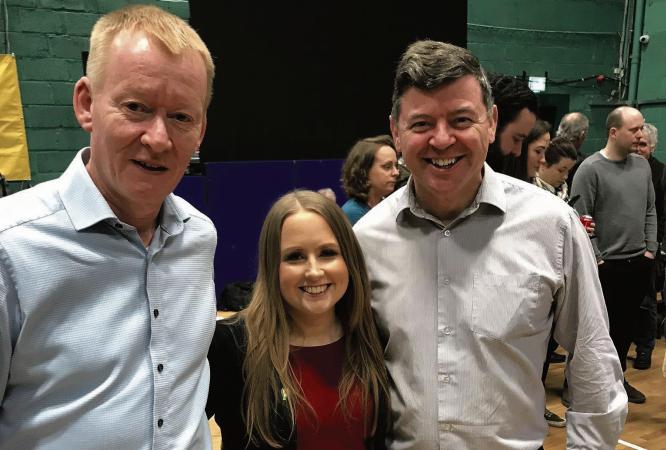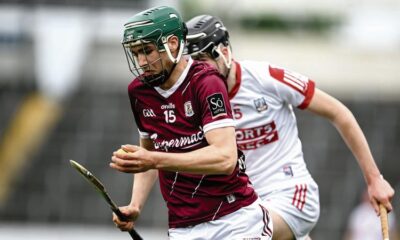Political World
Constitutional Convention illustrates that ordinary citizens can play their part in the process after all

Political World with Harry McGee
I have to say I was sceptical about the notion of a citizens’ assembly becoming part of official political discourse in Ireland. The idea is that rather than getting politicians to decide on new political direction, you get a representative group of people drawn from all strands of society – getting the demographics and geographics right, as Bertie Ahern kept on saying.
To me it seemed like an indulgence to political scientists – telling them all their Christmases had come as one. My instinct was there was potential for manipulation, conscious and subconscious.
But I must say I have revised my view somewhat. The Constitutional Convention has, on the whole, been a good idea. I have been at three or four of the sessions, some looking at relatively trivial constitutional change, others grappling with big ideas like Constitutional Change.
Overall, I think it’s been a worthwhile exercise and a really good example of democracy being more embracing and inclusive.
Of course, there are a couple of variations to the Irish model about which people will argue. The first was the fact that it’s not all citizens but that 33 of the 99 ordinary members (chairman Tom Arnold has been neutral) were politicians. In effect, a majority of the politicians have acted as a brake on some more of the radical ideas… though not all.
Having said that, on another level, the mix of politician and citizens worked surprisingly well as they weren’t really two opposing camps but worked together and fed off each other.
In the round-table discussions the citizens were able to rely on the experience and expertise of TDs and Senators (plus a number of Assembly members from the North) to explain how things are done, or should be done, or could be done.
The converse was that the politicians were able to hear first-hand the considered view of ordinary people about what works and what doesn’t work.
The result of the Convention isn’t binding on Government, but I hope it does take its reports seriously. The thing that impressed me most was how seriously the 66 citizens (and their alternates) who took part in the Convention took their roles and responsibilities.
I was there for the very first session where many of them were tentative and nervous and seemed a bit overwhelmed by the experience and all the media attention. But by this weekend, the sixth session, all had long overcome this.
The quality of question and contribution from ordinary members was very impressive. When you hear a guy quoting not just from the 1937 Constitution but also from its 1922 predecessor you know that guy is engaged.
The level of commitment was also evident from the weather. For the first weekend in living memory, the sun shone continuously – yet here were ordinary citizens happy to be holed up in a darkish room for the entire weekend on a voluntary basis.
We’ll briefly touch on the thinking behind such conventions before looking at the format. The citizens are selected by a polling company and come from every corner of the country. They are from cities, from the countryside, rich and poor, men and women, old and young, well educated or with minimal education.
The idea is that this is a mini-population and if given sufficient information and briefing in a balanced manner they will make recommendations that will mirror that of the larger population if there was a referendum (but without the kind of emotion and extremes and shouting of a campaign).
The format is simple. Political academics give briefings on the issue that is under discussion. They will outline the history, describe the pros and cons of the current situation, and then explain all the alternatives that will be available. Usually, two people will also be invited in to vote for and against the proposed change.
For more, read this week’s Connacht Tribune.
Connacht Tribune
The fine art of good timing when it comes to elections

World of Politics with Harry McGee
Academically, politics is described as a science. But in the real world, it’s more of an art – and one of the big decisions a Government has to make is to decide when to call an election.
Will they see out the full term, or will they go early – either to mitigate the damage they will ship, or to secure a victory before things go awry, or the economy takes a dip, or some kind of controversy erupts?
Timing is everything.
And there’s a bit of art to that – not to mention a lot of luck. If you call it early and win big, you’re a genius. If you call it early and lose, you are the political version of the village fool.
Charlie Haughey was a poor judge of the public mood. Twice he called snap elections and on both occasions they backfired. Haughey succeeded Jack Lynch as Taoiseach in late 1979 and did not – technically – have his own mandate. He tried to remedy that by calling an election in 1981. But it recoiled. Ray MacSharry warned him not to hold it during the H Block hunger strikes when republican prisoners were dying each day. He did not listen to the advice and found himself out of office.
After his return to power in 1987, Haughey tired of presiding over a minority government that kept on losing votes in the Oireachtas (the opposition won nine private members motions).
So he called a snap general election and it backfired. Fianna Fáil lost seats and had to broker a coalition deal with the Progressive Democrats and his long-standing political adversary Dessie O’Malley.
For more, read this week’s Connacht Tribune.
Connacht Tribune Digital Edition App
Download the Connacht Tribune Digital Edition App to access to Galway’s best-selling newspaper.
Click HERE to download it for iPhone and iPad from Apple’s App Store, or HERE to get the Android Version from Google Play.
Or purchase the Digital Edition for PC, Mac or Laptop from Pagesuite HERE.
Get the Connacht Tribune Live app
The Connacht Tribune Live app is the home of everything that is happening in Galway City and county. It’s completely FREE and features all the latest news, sport and information on what’s on in your area. Click HERE to download it for iPhone and iPad from Apple’s App Store, or HERE to get the Android Version from Google Play.
Connacht Tribune
Inch protest arguments are more subtle than Oughterard

World of Politics with Harry McGee
I was cycling down Mount Street in Dublin on Tuesday. It’s a wide esplanade that links the Grand Canal with Merrion Square. The street is a mixture of fine Georgian buildings and modern office blocks.
About half-way down is the office of the International Protection Office, which deals with asylum seekers who have arrived in the country.
Needless to say, the office has been overwhelmed in the past year. Besides an estimated 80,000 refugees who have arrived from Ukraine, there have been about 20,000 people from other parts of the world who have arrived into Dublin (mostly) claiming asylum.
The numbers peaked around Christmas, but they have been falling a little. In January, more than 1,300 people arrived seeking asylum but the numbers fell back to 831 and 858, in February and March respectively.
They are still huge numbers in a historical context.
So back to my cycle on Tuesday. I knew that some asylum seekers were camping outside the International Protection Office, but I was taken aback by how many. There were six tents lined up on the pavement directly outside. Then on the ramp that led down to the basement carpark on the side of the building, there were about another 20 tents.
It looked like what it was, a refugee camp in the middle of Dublin’s business district. If you pan out from Mount Street, you will find tents here and there in nearby streets and alleys. There were a good few tents in an alleyway off Sandwith Street about 500 metres away.
For more, read this week’s Connacht Tribune.
Connacht Tribune Digital Edition App
Download the Connacht Tribune Digital Edition App to access to Galway’s best-selling newspaper.
Click HERE to download it for iPhone and iPad from Apple’s App Store, or HERE to get the Android Version from Google Play.
Or purchase the Digital Edition for PC, Mac or Laptop from Pagesuite HERE.
Get the Connacht Tribune Live app
The Connacht Tribune Live app is the home of everything that is happening in Galway City and county. It’s completely FREE and features all the latest news, sport and information on what’s on in your area. Click HERE to download it for iPhone and iPad from Apple’s App Store, or HERE to get the Android Version from Google Play.
Connacht Tribune
Sinn Féin hunt for seats in ‘locals’ across Galway

World of Politics with Harry McGee
God that was a dramatic and historic weekend in England, wasn’t it? So much excitement, so much change, so much hype, so much out with the old and in with the new, and what looks like the coronation of a new leader. Yes, the local elections in Britain were something else weren’t they!
Apologies for not going on about King Charles III but the contract I signed when I became a lifelong republican forbids me to discuss the topic!
I know the British local elections sound a bit boring by comparison, but the results were stunning.
The Conservatives lost nearly 1,000 seats, the British Labour Party gained almost 500 and both the Lib Dems (with 350 gains) and the Greens (gaining over 200) also had amazing days at the polls.
It was Labour’s best day since 2002 but its victory was only partial. The Greens and the Lib Dems actually made gains at the expense of Labour in more affluent areas, and in parts of Britain where there were high numbers of graduates.
It was in the Red Wall constituencies in the North of England where the Labour recovery was strongest. These are working class constituencies with pockets of deprivation where people voted for the Labour Party forever. But all of those constituencies voted for Brexit and then voted for the Tories in the next general election. Labour is now winning back some of those votes.
Local elections are classified as second-tier elections which essentially means – from a national perspective – they are not life-or-death affairs, and not everything turns on them. Of course, it’s really important to have good local representation. But they are not an amazing weather vane for who rules the country.
For more, read this week’s Connacht Tribune.
Connacht Tribune Digital Edition App
Download the Connacht Tribune Digital Edition App to access to Galway’s best-selling newspaper.
Click HERE to download it for iPhone and iPad from Apple’s App Store, or HERE to get the Android Version from Google Play.
Or purchase the Digital Edition for PC, Mac or Laptop from Pagesuite HERE.
Get the Connacht Tribune Live app
The Connacht Tribune Live app is the home of everything that is happening in Galway City and county. It’s completely FREE and features all the latest news, sport and information on what’s on in your area. Click HERE to download it for iPhone and iPad from Apple’s App Store, or HERE to get the Android Version from Google Play.












